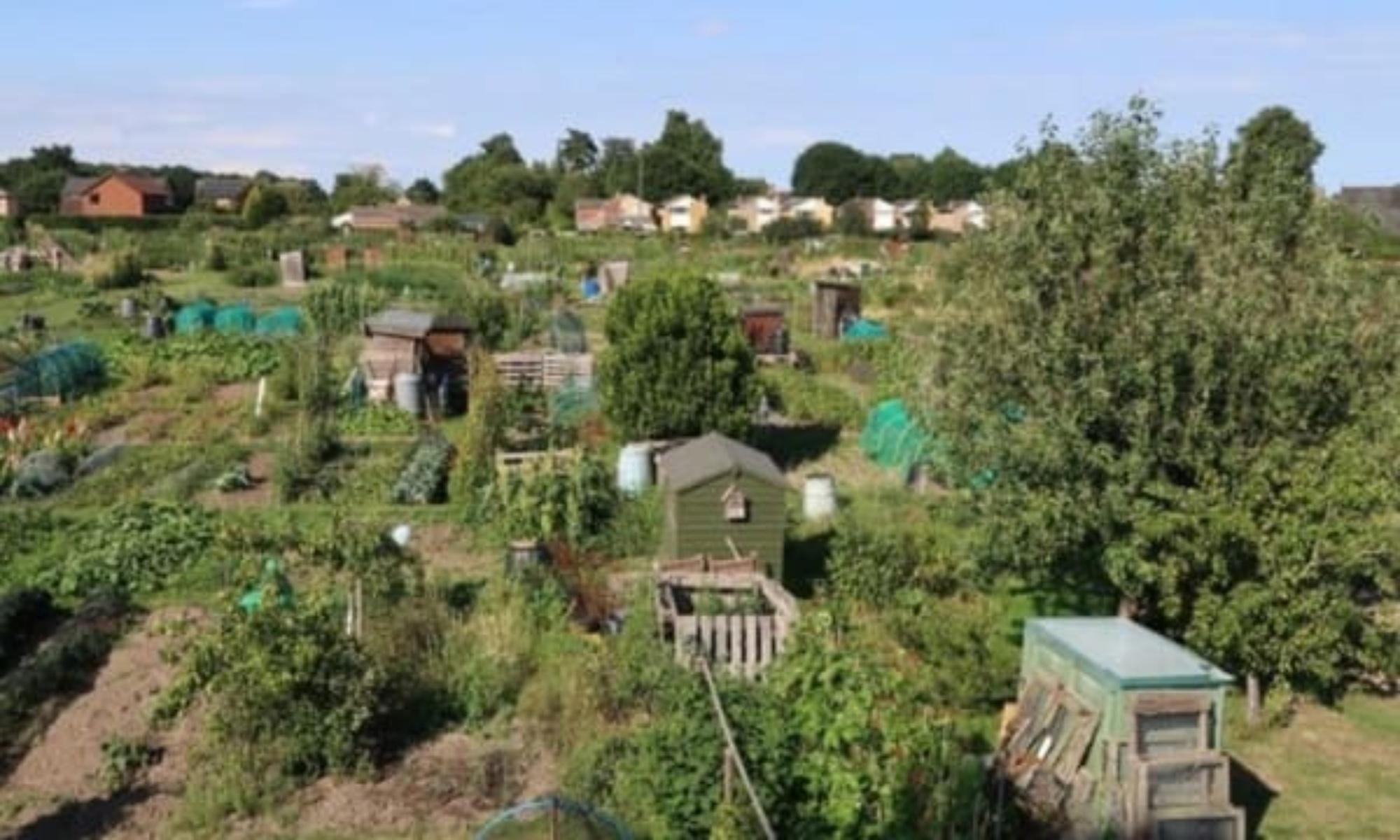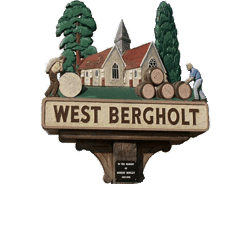Heath & Greens Walk
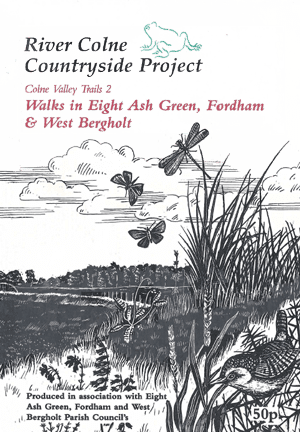
This is one of 3 walks in the 2nd booklet produced by the River Colne Countryside Project. Produced in association with local people & groups, this self-guided walk was originally marked out with way markers. The River Colne Countryside Project is a joint venture between CBC and BDC; it is a partner in the Colchester Countryside Service.
If you would rather use a printed copy then please download the following PDF file. It will squeeze onto 1 page if printed double-sided.
Introduction
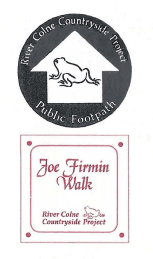
Eight Ash Green is a relatively new parish, being created in 1947. A survey of 1603 mentions Eight Ashes, referring to four fields held by a William Perrie. The first reference to Eight Ash Green occurs in 1777, the original hamlet being at the Blind Lane/Spring Lane – Colchester Road crossroads. Being very much a ‘created’ settlement, the village has no historic ‘centre’ or old main street, but still has much to offer.
The Parish has a wealth of attractive landscapes and some very important wildlife habitats, notably Fordham Heath, formerly in the Parish of Fordham. It has two ‘”greens” – Seven Star Green and Daisy Green, and together they support 125 species of wildflowers. The Greens are managed for the benefit of people and wildlife. This walk was named by Eight Ash Green Parish Council. The walk, which is about 3 miles long, starts from the Spring Lane Car Park at The Cricketers Pub.
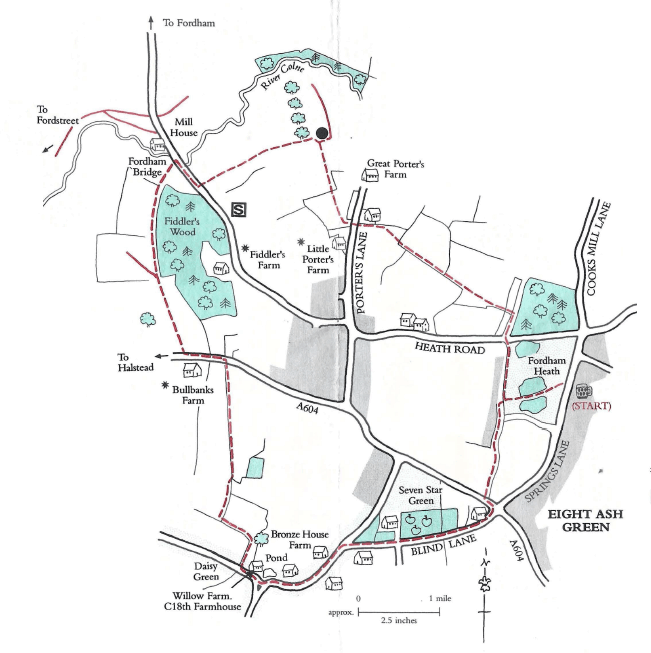
The Text & Original Images to Accompany the Walk
Fordham Heath
One of the most important wildlife sites in Colchester Borough, the Heath is managed to balance the needs of recreation and nature conservation. A look at the interpretation board in the Spring Lane car park will help you discover more about the heath and the animals and plants that live there.
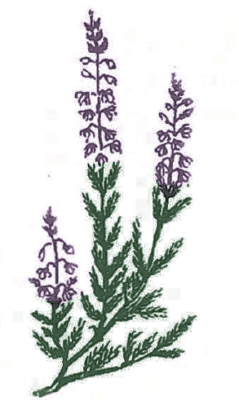
Ling
Once common on Fordham Heath, only a few plants now survive. Sensitive management of the site may help this species to spread.
Three Farms
Three farms on the route have names which reflect their mediaeval ownership:
- Bulbanks – John Bolebek (1248),
- Little Porters – John Porarius (1272), and
- Fiddlers – John Ffithelere (late C13th).
